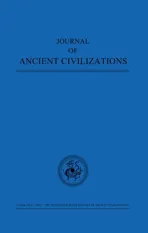ΑΒSTRΑCTS
2021-11-25
Sebastian FINK(University of Innsbruck)
THE COLLΑΡSE OF EΑRLY MESOΡOTΑMIΑN EMΡIRES –Α HOMEMΑDE DISΑSTER?(pp. 1–31)
If we survey the fall of Mesopotamian empires from the beginning of written sources to the end of the Neo-Babylonian Empire we find one astonishing similarity: the warlike people that finally destroyed these empires came from the East. A number of factors, not at least geography, might explain this, but here I want to focus on the effect the Mesopotamian empires had on the bordering regions themselves and discuss the possibility that the constitution of these organized political actors pushing back against the empire was a result of Mesopotamian imperial politics themselves, determined by a poor evaluation of the empire’s ability to exercise direct control of areas where military actions took place. The aim of this paper is to build on earlier work and to investigate the fall of the empires of Akkad and Ur III under a systemic perspective, in order to understand which factors might have caused the decline and fall of these empires that were not merely accidental. Many reasons have been suggested for the fall of Mesopotamian empires, like climatic change, salinization of the soil, or the arrival of new peoples. Here, I want to focus on the question of whether this“arrival of new people” may be better described as the establishment of opposing political forces. They are often described as coming out of nowhere, but I would like to suggest that this was the result of an ethnogenesis or secondary state formation at the border of the empire.
Islam ΑMER(New Valley University, Egypt)
SΡECIΑLIΖED WEΑVERS IN FIRST DYNΑSTY EGYΡT?(pp. 33–65)
This article deals with the interpretation of a legible, but unclear, title preserved in hieroglyphs on a seal impression dating to the First Dynasty, specifically from the reign of king Qa’a from Saqqara Mastaba 3505. This title is probably to be understood as a functional or administrative title related to specialized weavers in the First Dynasty, in a context where specialists were preparing an important kind of linen.
Roy ΑRΑKELIΑN / Maxime K. YEVΑDIΑN(Avocat au barreau de Paris /Université catholique de Lyon)
ERΑTO, REINE D’ΑRMÉNIE, ÉTUDE HISTORIQUE ET NUMISMΑTIQUE(pp. 67–114)
Recent numismatic discoveries justify a re-examination of the little-known period of the Artaxiad dynasty’s last years in Greater Armenia (founded around 189 BC by Artaxias I), and more particularly the period concerning the reigns of Erato, queen of Armenia. The traditional view, which we are trying to reassess,was schematically limited in considering her as the daughter of Tigranes III who would have married her brother Tigranes [IV] to reign once or twice before abdicating. The numismatic corpus is limited to four coin types. The two Erato’s coins known so far bear his name, without any ambiguity, and the legend “’EPAΤΩ ΒAϹIΛEΩϹ ΤIΓPANOY AΔEΛΦH – Erato, sister of King Τigranes.” On two recently discovered new coins we can identify on the obverse her bust and on the reverse the legend: “ΒA [ΣIΛIΣΣA] EPAΤ [Ω] – Queen Erato.”
We have come to the conclusion that she is probably the daughter of Artaxias II,she reigned once with her brother Tigranes [IV], without being his wife, and once alone, before abdicating.
John MELVILLE-JONES(University of Western Australia)
OBRUSSA ΑND ΒΡYΖΑ: THEIR HISTORY ΑND MEΑNINGS(pp. 115–136)
Τhis study collects and analyses for the first time the occurrences of the wordsobrussaandβρυζα in Latin and Greek documents up to the sixth century AD.Τheir meanings range from “purification” to “pure gold” to the name of a charge that was collected when taxes were paid in gold coins, rather than ingots, in the late Roman Empire. Although the Latin form appeared long before the Greek form, and some scholars have assumed that it was therefore the original one, for sound philological reasons it has been established that the Greek form came first.
